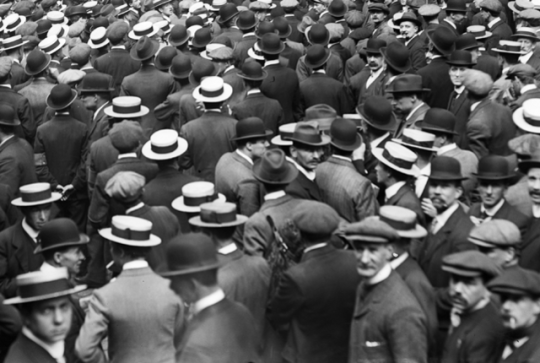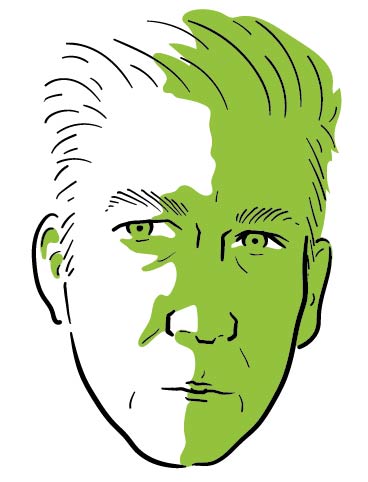
Jim Knipfel on the Straw Hat Riots of 1922
The history of New York City has been peppered with more than its share of memorable riots. If you take folk historian Herbert Ashbury at his word, the Five Points section of the Lower East Side was host to a continuous, bloody, multi-fronted riot which rolled on for some thirty years in the latter half of the 19th century. Tribes of newly-arrived Irish, Italian, and German immigrants battled each other, American-born gangs, and the police and firemen for control of the area. The devastating Draft Riots in the summer of 1863 raged for four days and remain the deadliest riots in U.S. history. There were the riots and looting that accompanied the 1977 blackout, the ethnically-charged riots in Howard Beach in 1986 and Crown Heights in 1991, and even the drunken riots that erupted outside Madison Square Garden following the New York Rangers’ Stanley Cup victory in 1994. For sheer, mind-boggling foolishness, however, none of them can touch the Straw Hat Riots of 1922.
Fashon has always been taken perhaps a bit too seriously in New York, a town where proper or improper attire can in an instant establish or destroy your social standing. A woman gauche enough to wear white shoes after Labor Day, for example, could quickly find herself shunned not only by strangers, but co-workers, friends, and family. In the first half of the 20th century, everyday fashion was as much a concern for men as it was for women. But in the case of men, the focus was much more on proper headgear.
Straw hats came into vogue and established themselves as the standard male fashion accessory of the Jazz Age, and an arbitrary but strictly-enforced rule went into effect. The rule dictated that on September 15th of every year, men switch out their summer straw hats for much more practical felt hats. The felt hats would then be worn exclusively through the fall and winter until the straw hats came out again the following spring. As with the accepted and appropriate color of women’s shoes, the rule could not be easily ignored.
But unlike women who dared to wear white shoes after Labor Day, the repercussions faced by men who wore the incorrect hat were much more severe than mere shunning. Men brazen enough to ignore the straw hat rule might find themselves confronted by roving bands of college-aged fashionistas, who expressed their displeasure with this particular cultural faux-pas in fairly direct terms.
It became common and accepted practice around New York that should these marauding bands of self-appointed fashion police spot a man foolish enough to wear a straw hat after September 15th, it was their sworn civic duty to maintain the social order and preserve the sanctity of Western Civilization by plucking the hat off the offenders head, tossing it to the ground. and stomping on it.
Hat smashing was not only accepted and expected by New York’s citizenry, but so widely practiced that local newspapers began running cautionary ads in the weeks leading up to the 15th to remind men that it was time to start preparing for the switch. The papers went so far to suggest perhaps even getting their felt hats cleaned and blocked before the fateful day arrived.
On September 13th, 1922, two full days before the officially sanctioned switch, a gang of confirmed and overanxious hat smashers, unable to contain themselves, began gleefully snatching the straw hats off the heads of unsuspecting Lower East Side factory workers before throwing them to the pavement and stamping on them. Caught unawares by this grotesque breach of social etiquette, the factory workers were left defenseless, and many hats were destroyed in the unprovoked and unjustifiable attack.
Emboldened by the success of their admittedly cheap guerilla tactics, the hat stomping gang rolled eastward to the docks near the entrance to the Manhattan Bridge, where they likewise began grabbing hats off the stevedores’ heads. In tactical terms, the wilding hat smashers could have likely chosen a better target. Unlike the factory workers from earlier in the afternoon, the stevedores did not take kindly to having their hats knocked off and stomped upon. Instead of panicking or cowering, the dock workers immediately and brutally struck back at the hooligans. It was two days early, after all.
An ugly brawl erupted and quickly expanded, soon shutting off access to the bridge. Traffic leading to the bridge came to a standstill as fists and hats continued to fly. The police were called in to put a stop to the melee, but in the end only a small handful of arrests were made after the peace was once again restored and traffic started flowing.
Over the course of the following day, word of the hat smashing free-for-all on the bridge quickly spread around town. That evening, hundreds of eager and inspired young fashion vigilantes took to the streets of Manhattan, many of them armed, on the hunt for unsuspecting straw-hatted victims. Given the prescribed and accepted headwear switch was still several hours away, victims were plentiful.
It was reported at the time a raucous mob of well over a thousand young men swarmed Amsterdam Avenue on the Upper West Side, descending upon anyone out for an evening stroll who’d been unlucky enough to don a straw hat before leaving the house. Those victims foolhardy enough to protest the wanton destruction of their hats were savagely beaten with fists and cudgels by the fashion-conscious mob, and over a dozen were sent to area hospitals.
As their bloodlust grew, the hat stompers, blinded in their frenzy, no longer felt compelled to limit themselves to straw hats alone, and soon began snatching hats of all kinds off the unsuspecting targets, men and women alike. Bowlers, Hamburgs, bonnets, derbies, porkpies, hats of all shapes and sizes were left flattened and ruined on the sidewalks and in the gutters. It’s reported one overzealous stomper even dared knock off and stomp upon the hat of a responding policeman. Hundreds were taken into custody, though only a tiny percentage of the most vicious hat stompers served any jail time.
As the next day was the 15th, the number of potential victims dropped precipitously, and the riots came to an end. But the madness of those two days by no means put a stop to the tradition and practice of straw hat smashing. Two years later, in fact, a man was beaten to death on a Midtown street as he attempted to protect his hat when confronted by a group of hat-smashing thugs.
On September 20th, 1925, the front page of the New York Times carried a story with the headline: “Discard Date For Straw Hats Ignored by President Coolidge.” But even if that implied presidential decree did not exactly mark a decisive end to the ugliness, it at least hinted the day was coming soon when men in New York, regardless of their chosen headwear, would be able to walk the streets in safety and comfort.
The practice of hat smashing, if only a pale reflection of its one-time fervor, continued through much of the rest of the decade, until straw hats once again fell out of favor as a fashion necessity. When that happened, the insanity of those two days in 1922 quickly slipped from the public consciousness, as we found other things to riot about.





